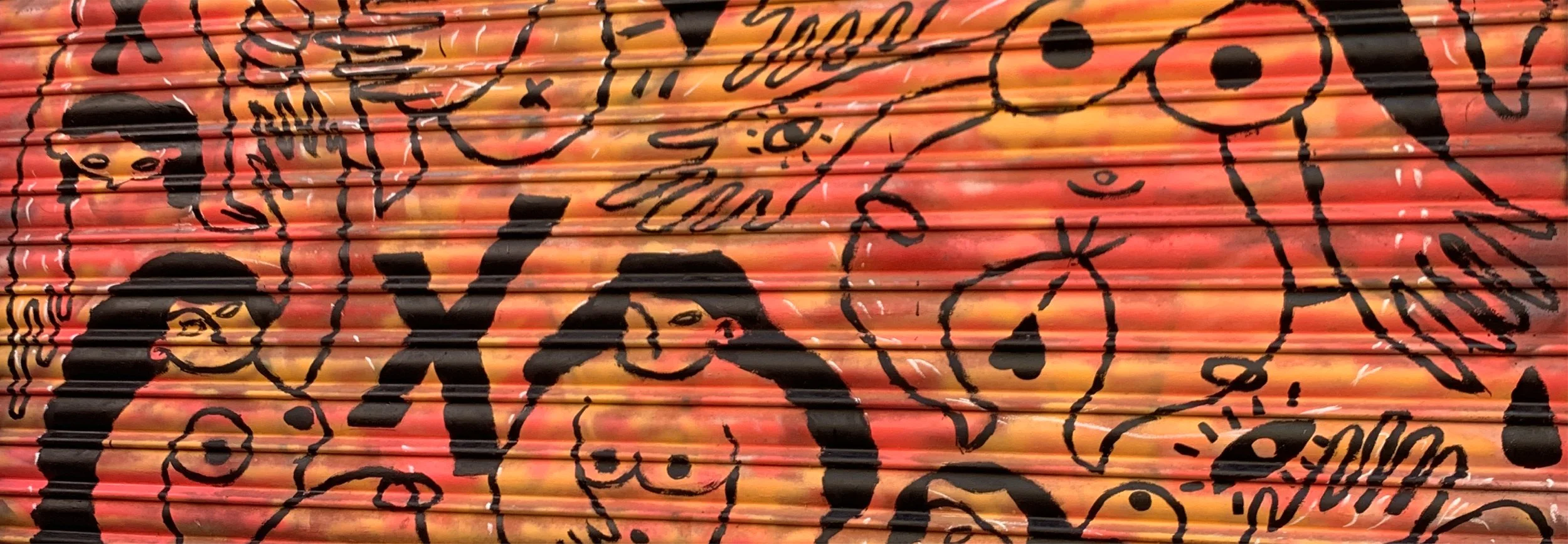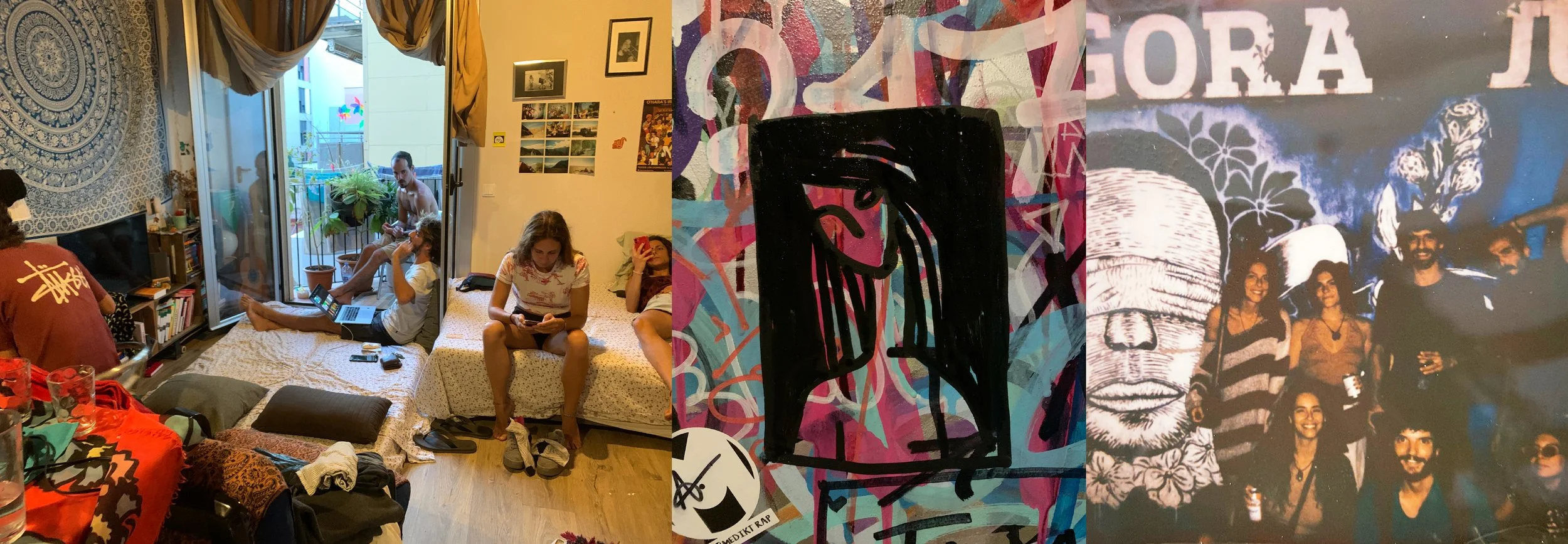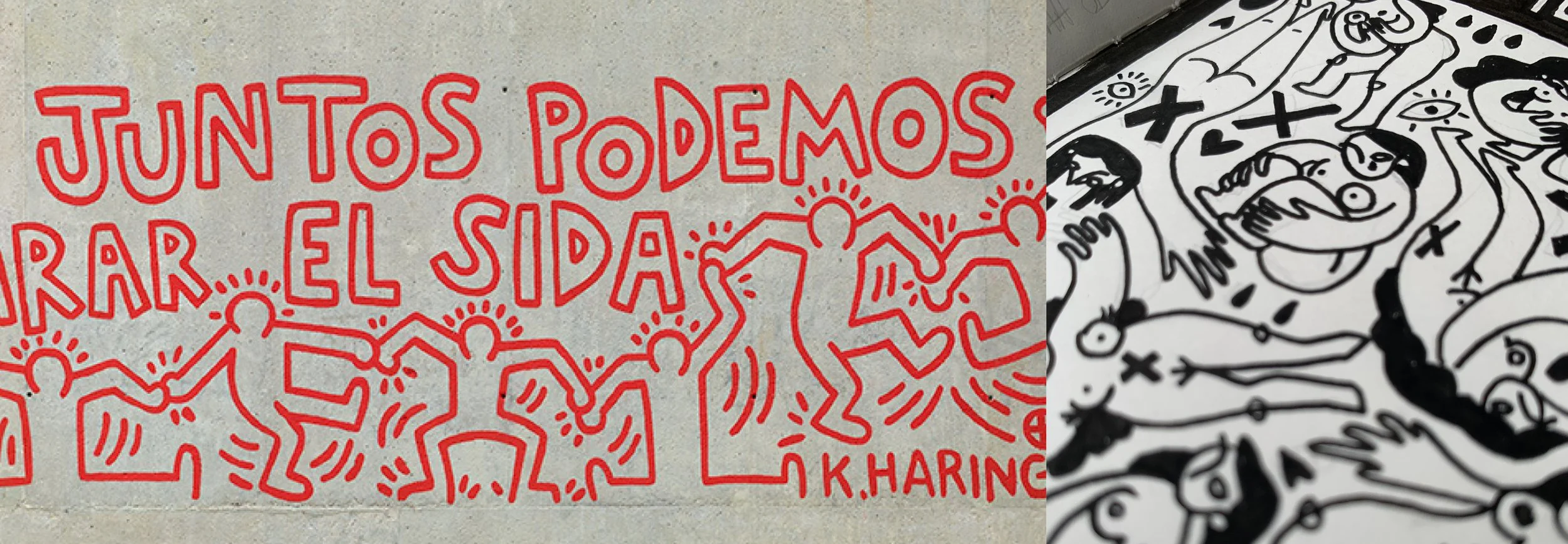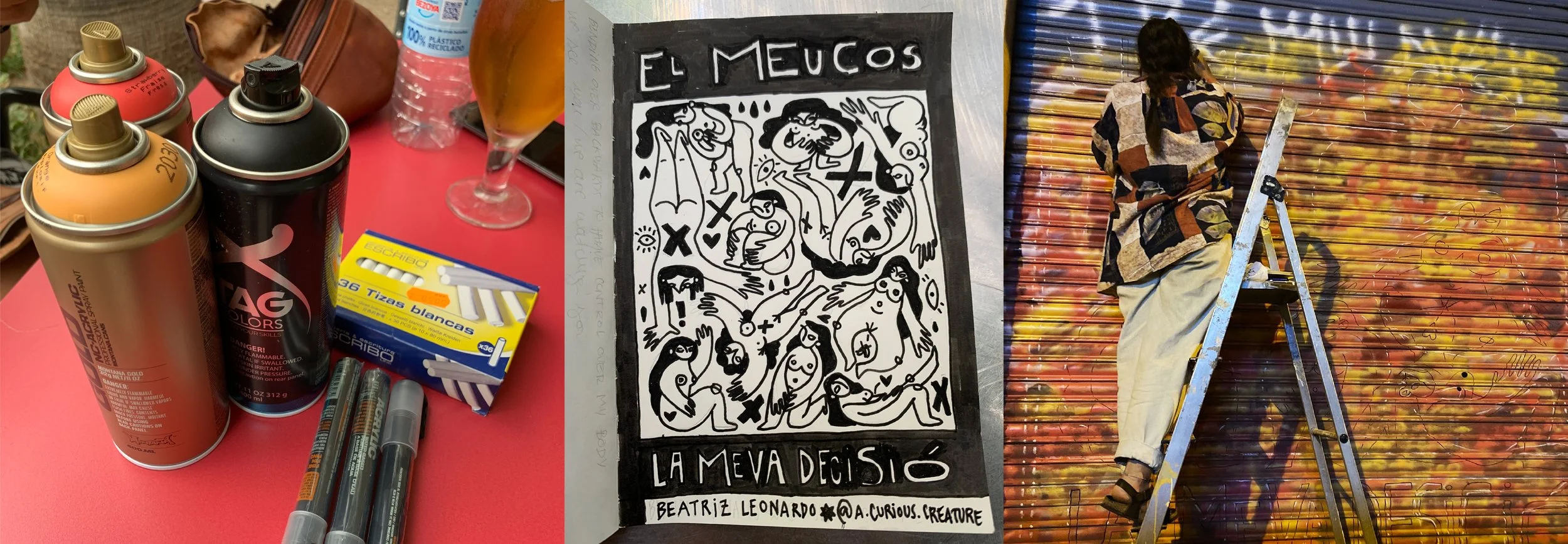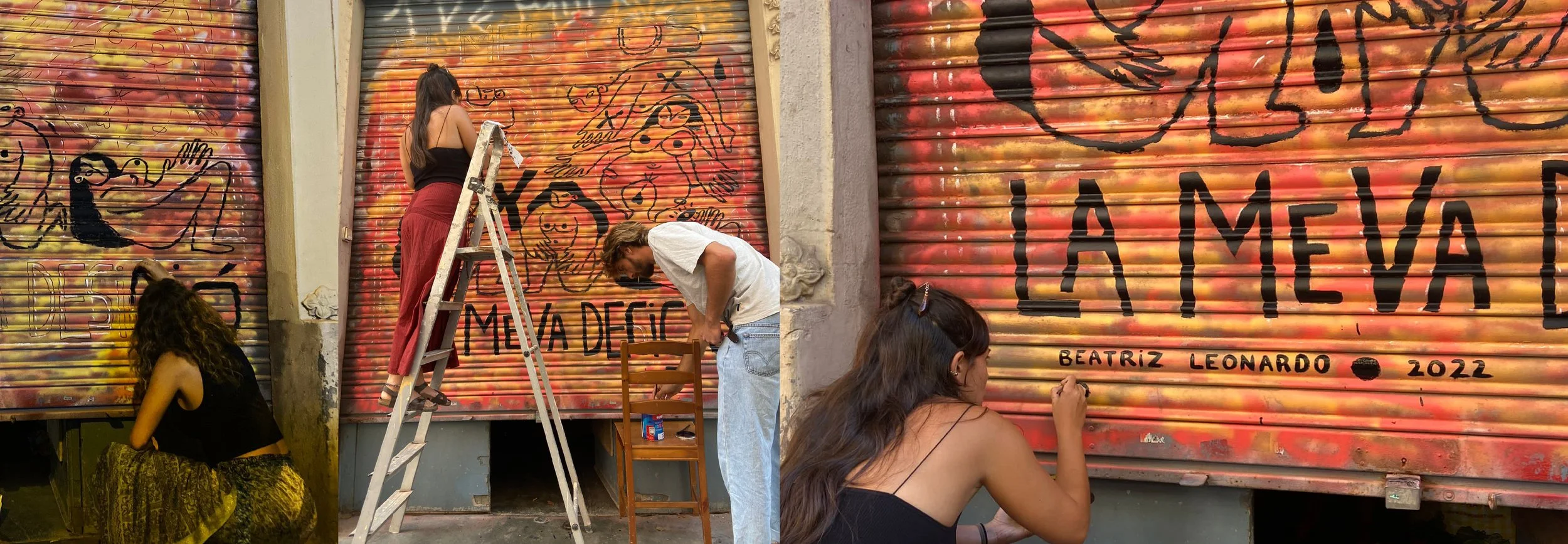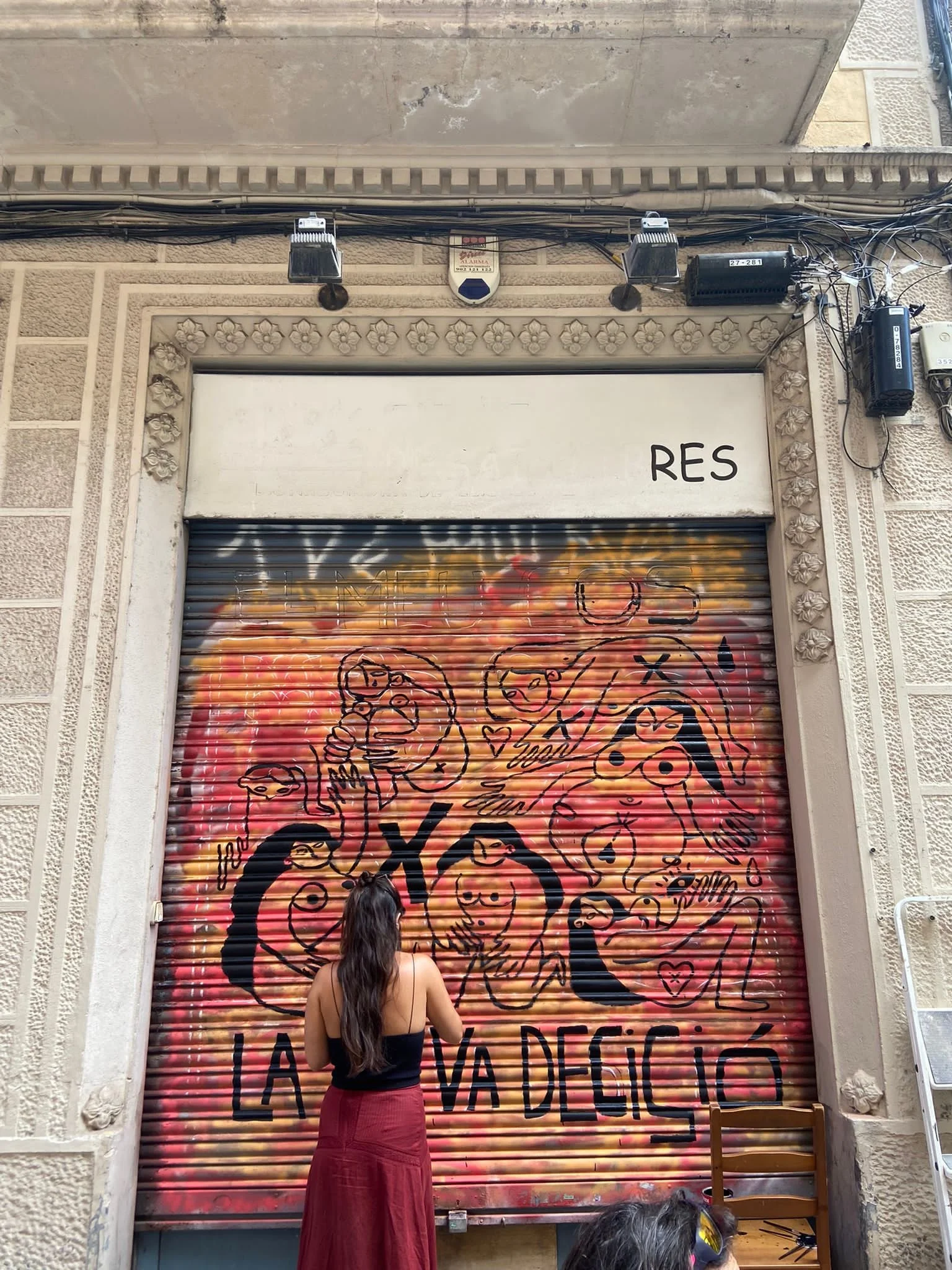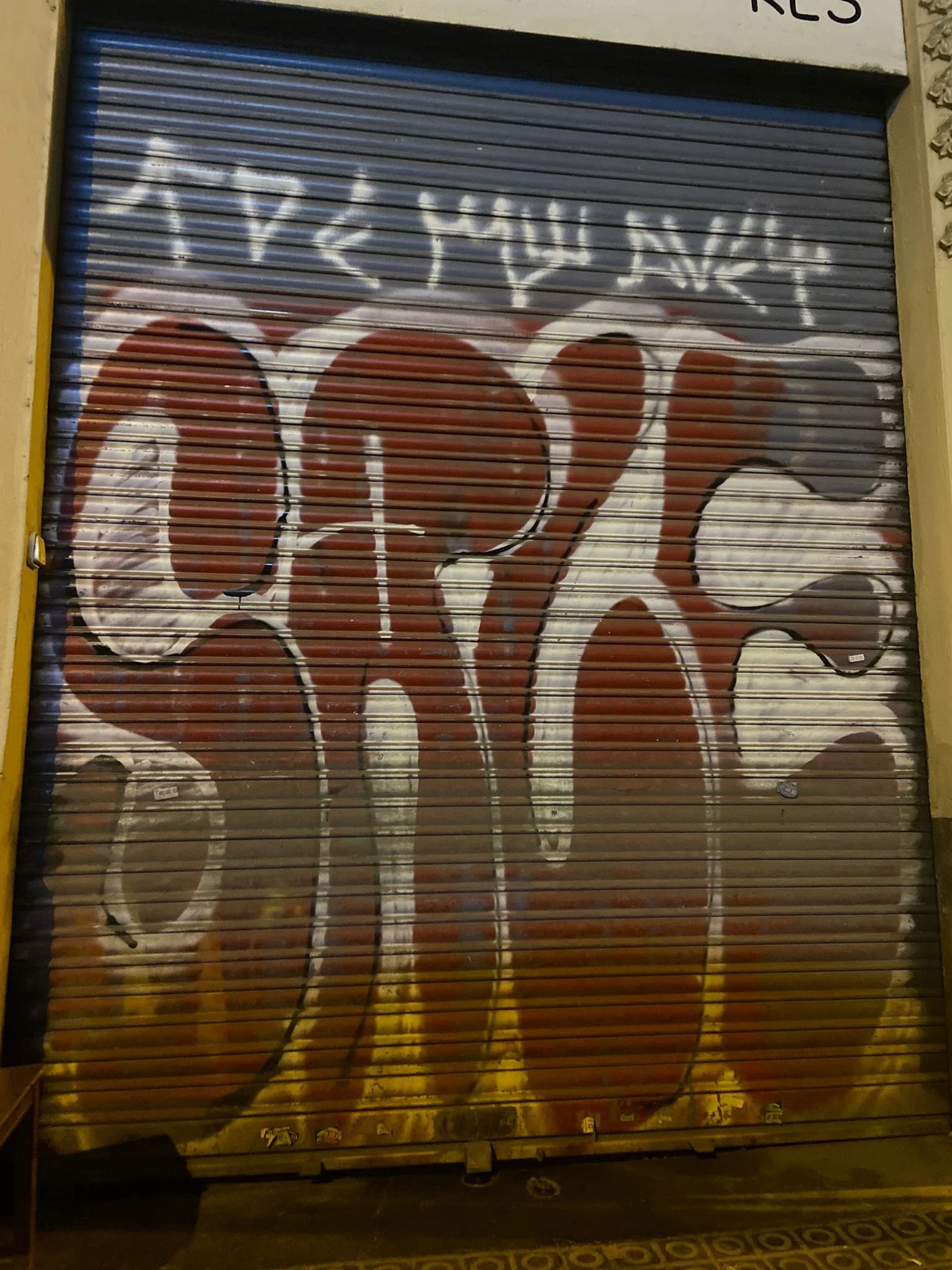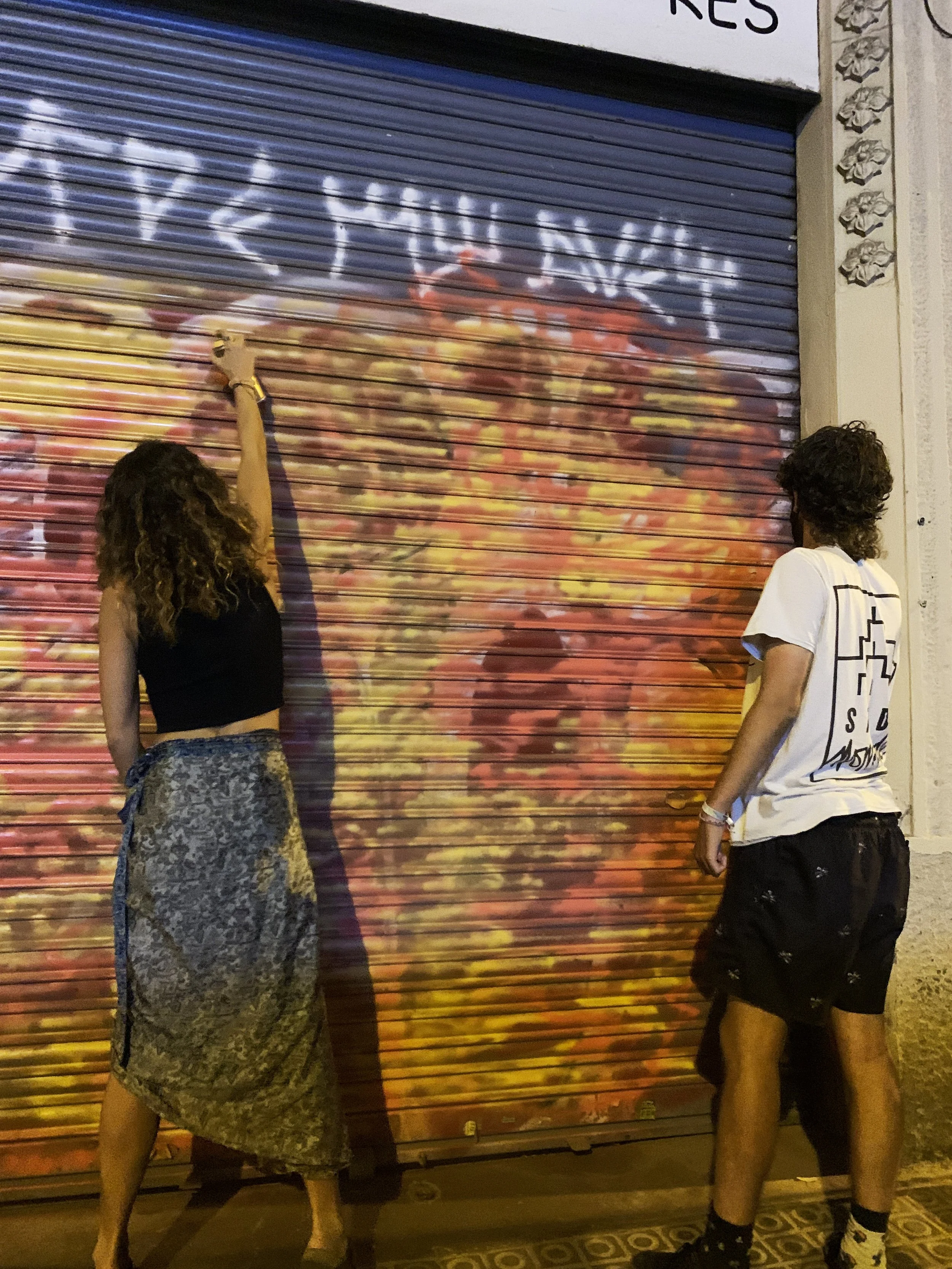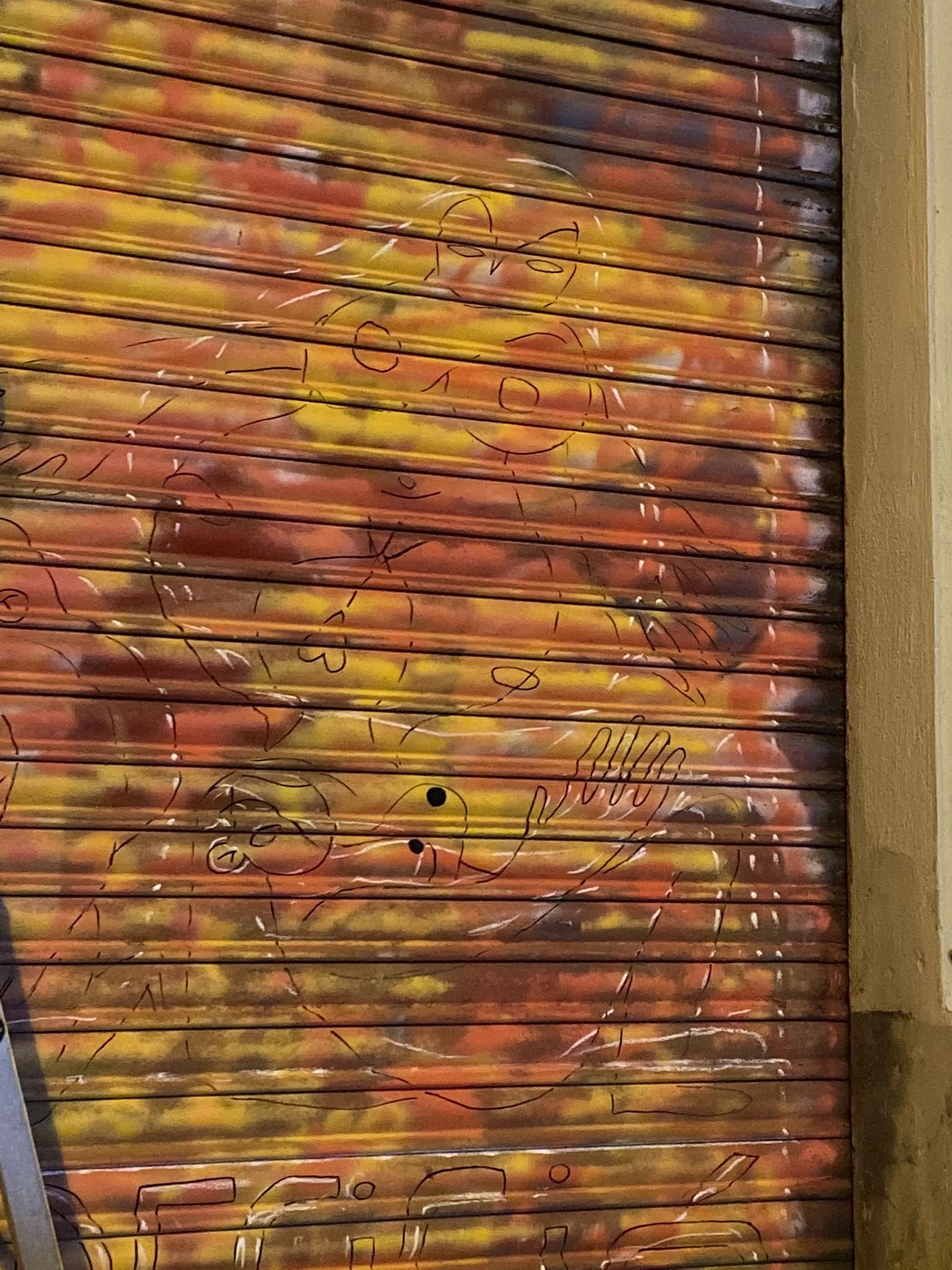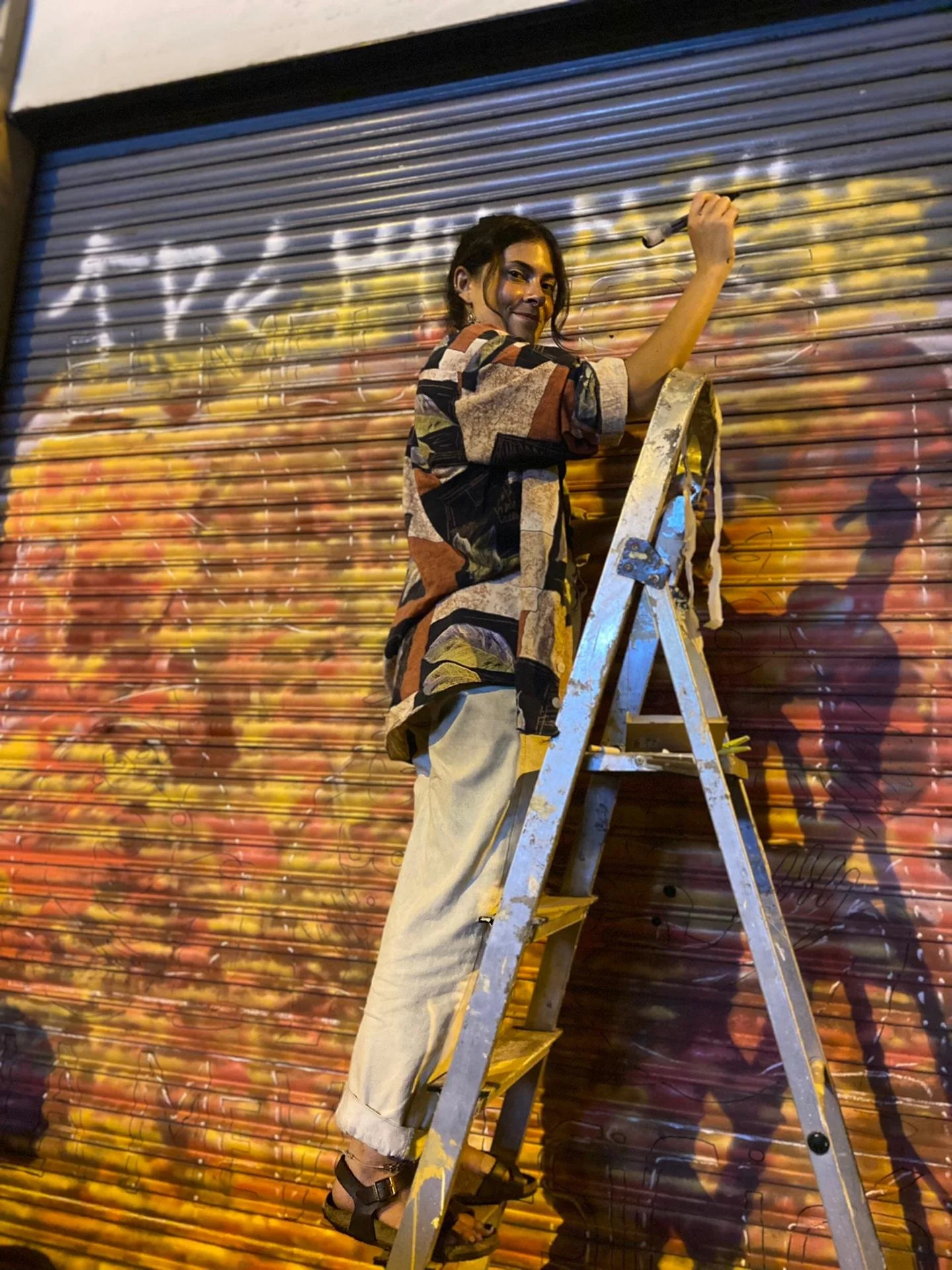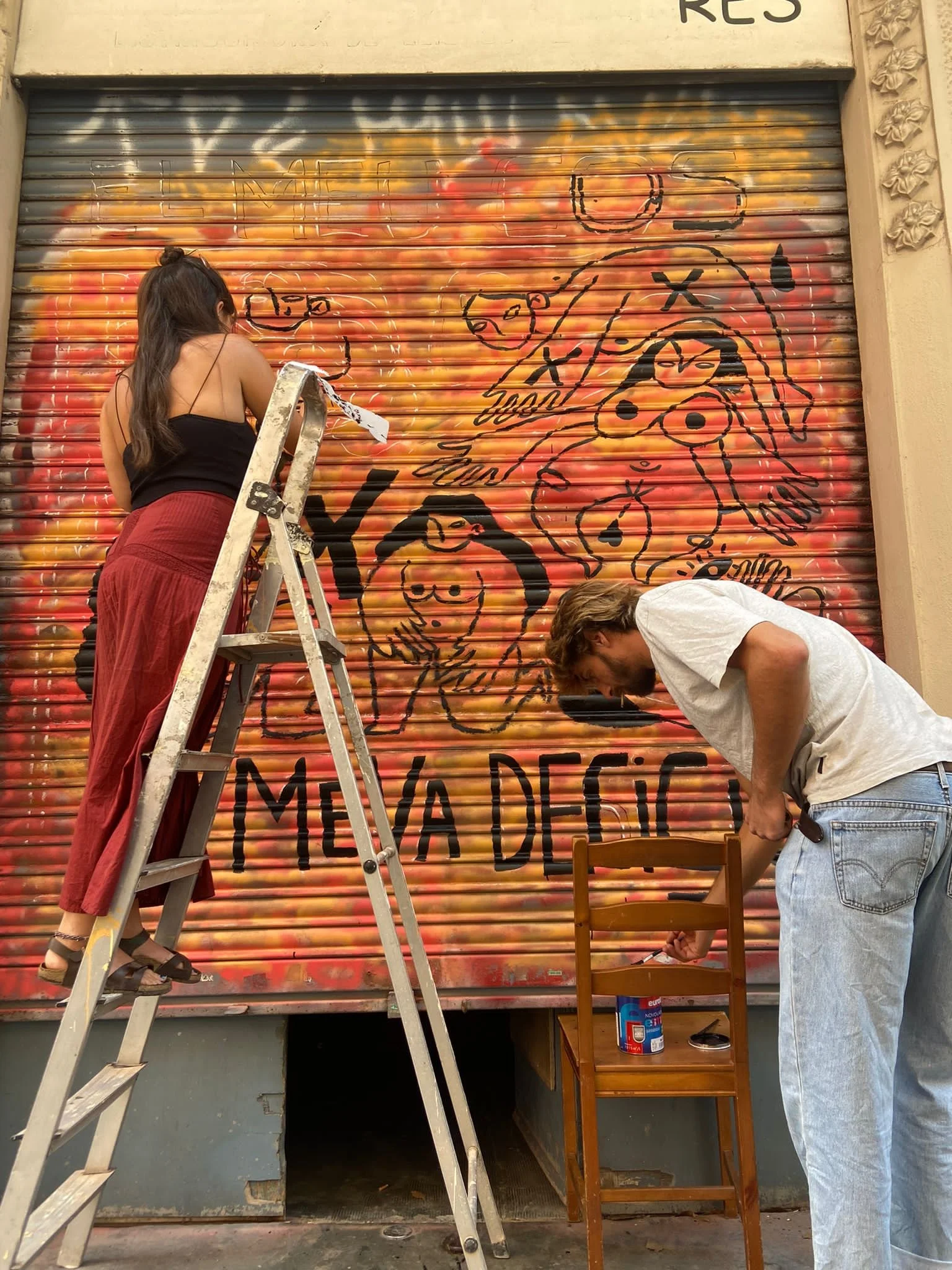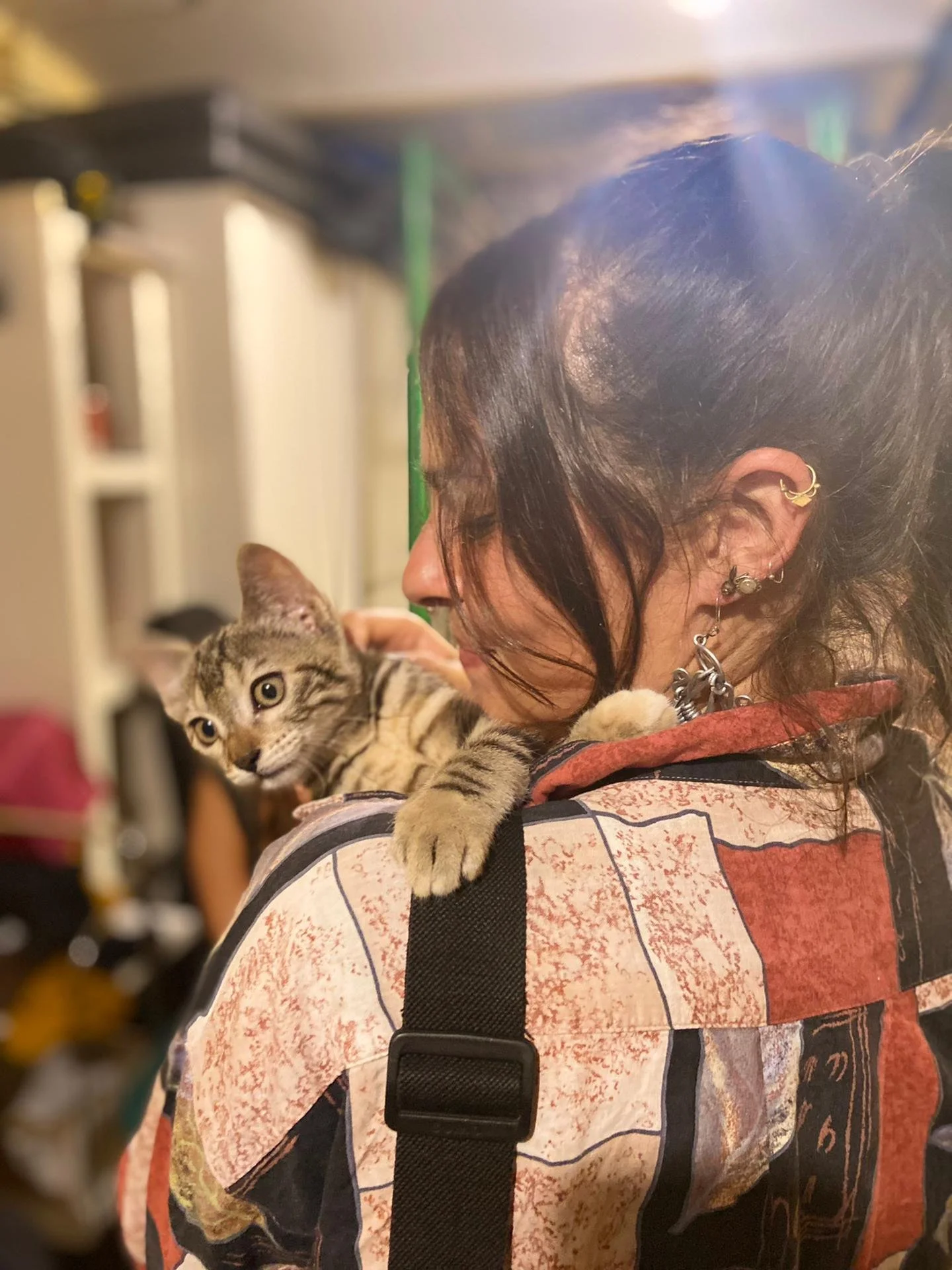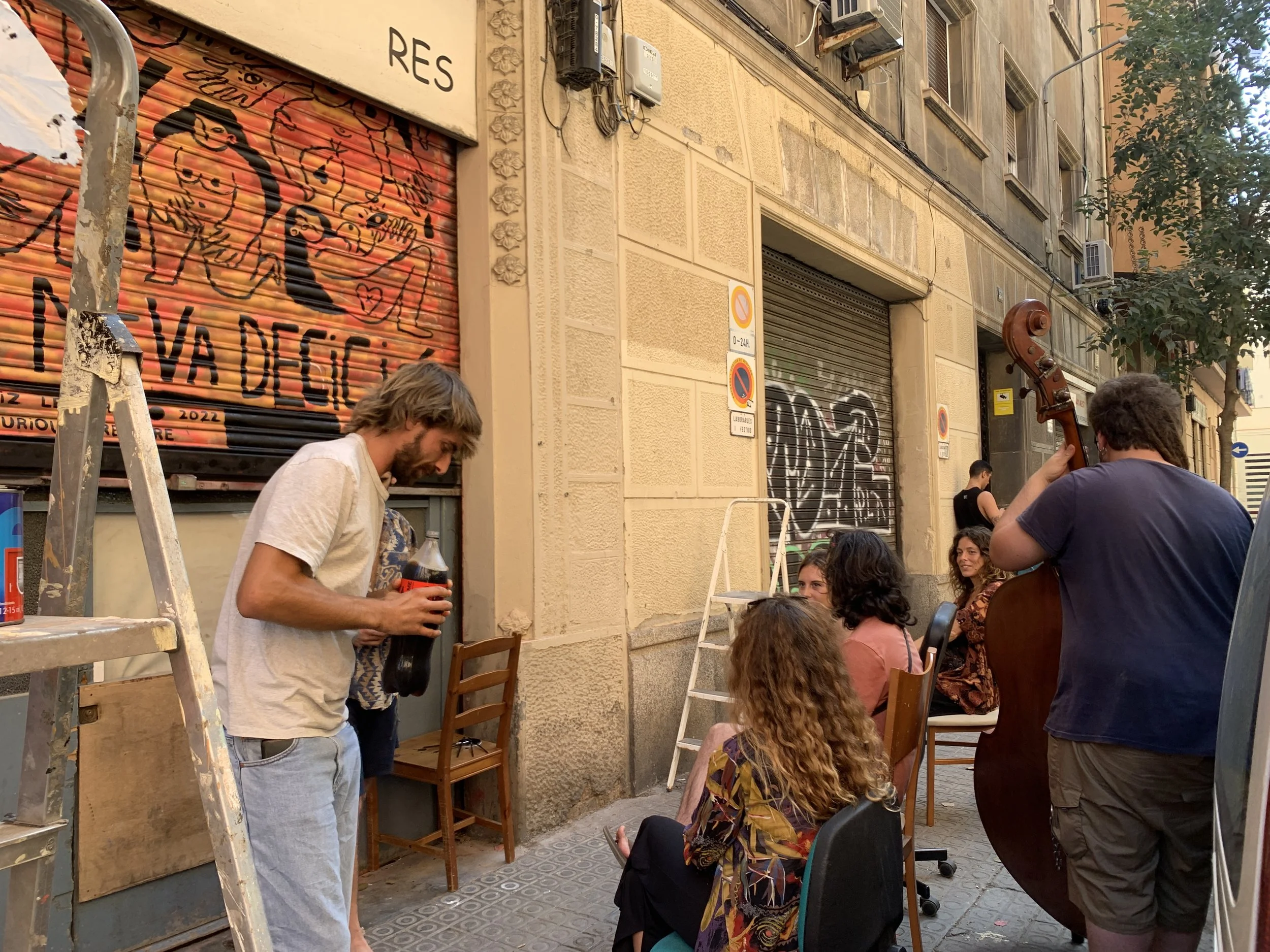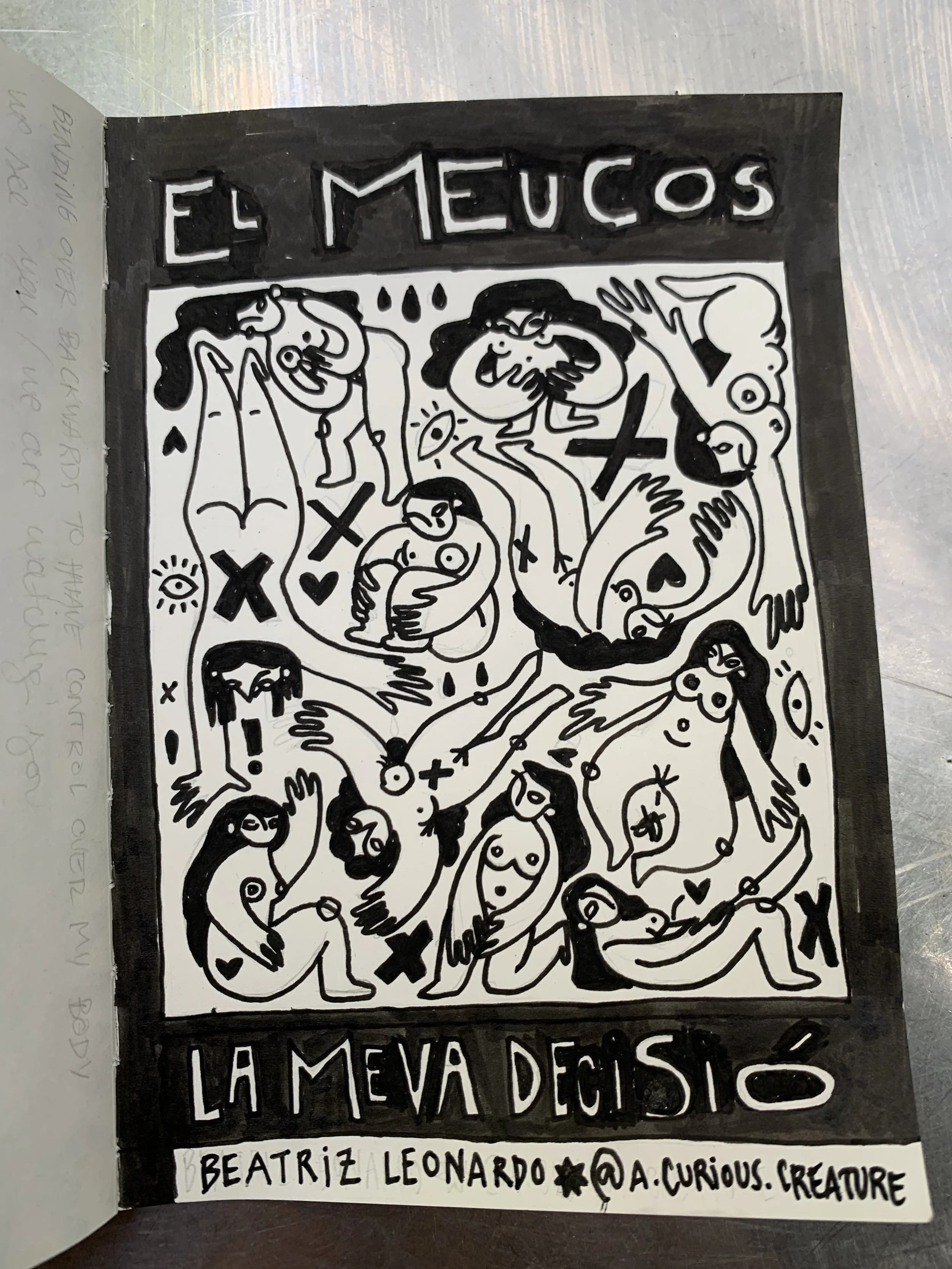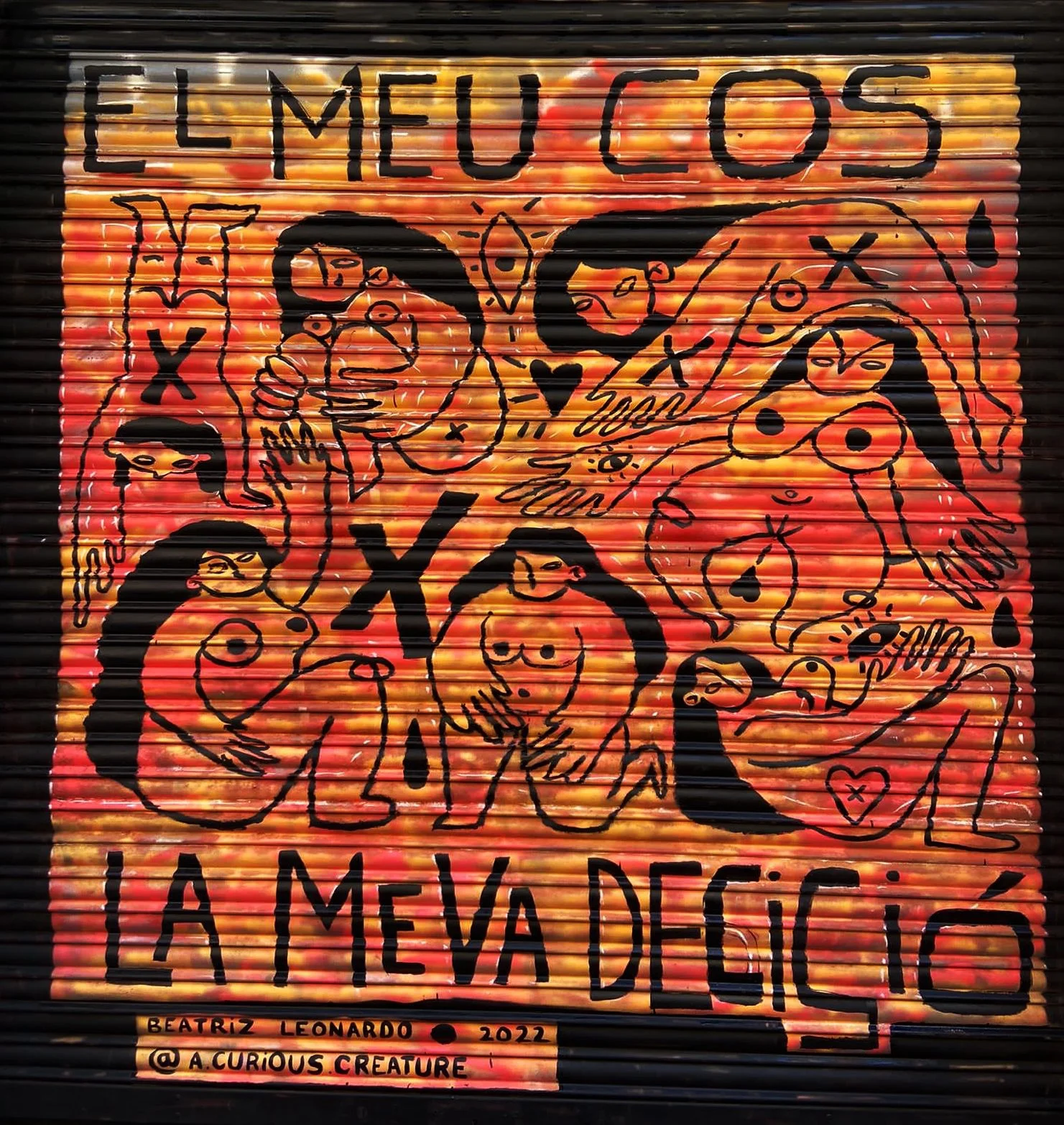How to create street art - the story behind my first mural
Step 1: Find a wall
On June 2022, I went to Barcelona, Spain. Since 2012 I have been going there more or less regularly, to visit friends, lovers, to dance, to roam in the dirty streets and indulge in the energy of this city. I really love it there.
This time, we found an excuse to go visit some friends who live in the city, cramming seven people in a little one room apartment, camping out on their living room, a humble inflatable mattress on the floor being shared in a rotating fashion. I had recently come back from a visit to Bristol where I had participated in Upfest, the grand street art festival where I got to make my first mural using spray cans. This experience made me realize I know nothing of this technique, without saying that I pretty much suck at it. I made a promise to throw myself at every possible opportunity to learn and train to make art in a large scale, using scary new tools. I’m pretty sure that’s the only way to get better at anything.
This in mind, I brought some black Posca pens with me to Barcelona and got into a wild frenzy leaving little quick drawings everywhere that made sense. Quick line drawings of faces and women seemed to be the fast effective way to leave a mark on public spaces, and I had some fun finding little homes for each little character.
One afternoon, we were all sharing a beer in the Agora, an occupied community space run by some people from the Raval neighbourhood, when I struck a conversation with Pere. He was a friend of the people I was visiting, and I told him about my desire to work on my mural art skills. He very mellowly let me know that he had some blinds in his apartment not so far from where we were and that I was welcome to paint them. And that’s how I found a canvas.
Step 2: Figure out your message
Sometimes projects take a while to materialize, sometimes ideas just sort of pop into my head as if whispered from the art heavens. Maybe they have just been brewing there for a bit, waiting for the right format to come out. Anyway this was such a case. Right after Pere offered his space it took me about 5 minutes to let him know I wanted to make a statement about abortion, and if he was okay with having a strong message at the front of his house - “We are four guys living there, and we are all feminists”.
Looking back, however, this subject didn’t magically materialize out of nowhere. First of all, the political spirit of Barcelona is undeniable and intoxicating. There is a strong sense of community and a long history of public demonstrations, with visible results. I had spent the past few days discussing this with my friends and visiting occupied communal spaces, getting a sense of the strategies and programs implemented by normal citizens, and the direct impacts those had in their reality. In a time of political numbness and overall feelings of powerlessness, this was a breath of fresh air.
Secondly, news of the overruling of the constitutional right for abortion in the USA, 50 years after it had been established, was weighing on my mind. I felt this deeply as a violation of the most basic and profound human rights, and a direct transgression to freedom over the bodies of women, of my body.
The simplest phrase comes to mind: “My body - my choice”, and the message behind this mural. Being in Catalonia, and in solidarity with the independent movement, I translated it into Catalan (yes and I checked with a few locals to make sure I wasn’t making a mistake): “El meu cos, la meva decisió”.
Step 3: Create an image
Piece of advice: if, like me, you struggle to keep a sketchbook, it is a good idea to buy a very small notebook and carry it with a couple of pens when you leave the house. You never know when you might need it and you don’t want to find yourself losing your genius ideas because there wasn’t a piece of paper around.
Near the MACBA there is a large Keith Haring mural intended to raise awareness of HIV and AIDS. It’s been there since 1989, which is a ridiculously long lifespan for the most ephemeral of art interventions, and one of his last pieces as he died of exactly that disease a year later. His repetitive figures dancing around my mind, I made a drawing on the little sketchbook thinking of this new and old as time subject. It shows a spectrum of women in different positions, hearts open and broken, with eyes on each and every one of us, to make sure we are accountable for our actions, to show how we are all human, connected, and entitled to freedom over our choices.
Step 4: Pick up the right materials
One thing that is important to point out is that I am completely unexperienced at painting in public spaces. From the little experience I have, the main point I have found in common is that every surface is different and therefore the materials necessary to paint it vary every time. The last mural I did, I used spray paints as background colours and filled in the outlines with large posca pens. Thinking I could use a similar approach I bought all these materials plus some chalk to use as an easily removable sketch base (last time I used pencil, I won’t be doing that again). Of course last time I was painting a smooth wooden panel and it all worked out pretty well. This time I was working with a textured, dirty panel of blinds that lives outside and probably hasn’t been washed in a couple of decades. The sprayed background colour did fine (it is a powerful object capable of resisting most circumstances - all hail the spray can), but the humble pen didn’t quite cut it - it kept picking up on dust and not inking the surface. On top of that I also noticed that the lines were way too thin to convey the contrast I was going for. Seeing as it was quite late in the night when I realised this and all manner of stores were closed, I asked for some brushes from the house (which were old and frizzy), and a plate (which was old and disposable), and I sprayed the can onto the plate to use as ink. It dries very fast so time is of the essence and you have to keep repeating this motion. Not ideal, I know. The next day I bought some outside black paint and some decent brushes. Let’s say I learned my lesson.
Ah, also - don’t forget a ladder, or at least a sturdy stool if you’re working with a canvas that is almost twice your size. Your arms and back will thank you.
Step 5: Gather your friends and don’t forget to ask for help
Painting a mural can take a while so you might as well make it into a sort of painting party. We met on a street close by for food to strengthen us for the task at hand. On the street next to the house where I painted was a bar called Lilith and Sons, which struck me as a sort of beautiful sign from the universe as Lilith is the first Curious Creature I ever drew and a powerful archetype of feminist liberation. What I was about to paint felt more right than ever.
I brought along my friends and the people who live in the house who sat around the wall, playing music and chatting while I was pretending not to freak out over the pen fiasco. Now, this is a tiring endeavour, so I sat down every now and then and asked for my friends to step in. We all had a part in spraying the background with the three colours we had and, once I had created the rough outlines, I told those interested where to fill in the ink. We got started at night and came back the next day (with a sense of urgency since I was leaving the next day), with the right materials and still a good mood. A neighbour on a window played the saxophone for us at some phone, Pere brought along his guitar and we were blessed with a double bass concert towards the end. There was even time for a sushi break.
The mural was finalised with a happy cheer and it now lives in the streets of Barcelona. It is a rare one to find as you can only see it when the blinds are closed, which perhaps makes it that much more special. All in all I am happy with the clumsy result and mostly for the beautiful memory shared with loved ones. Let me know if you ever see it.
“Never forget that it only takes a political, economic or religious crisis for women's rights to be called into question. These rights can never be taken for granted. You must remain vigilant throughout your life.”
Simone de Beauvoir
(Special thanks to Pere, the boys from the house, Carmen, Lourenço, Mafalda, Mariana, André and Burundi, the baby cat that played with us before we got to painting)